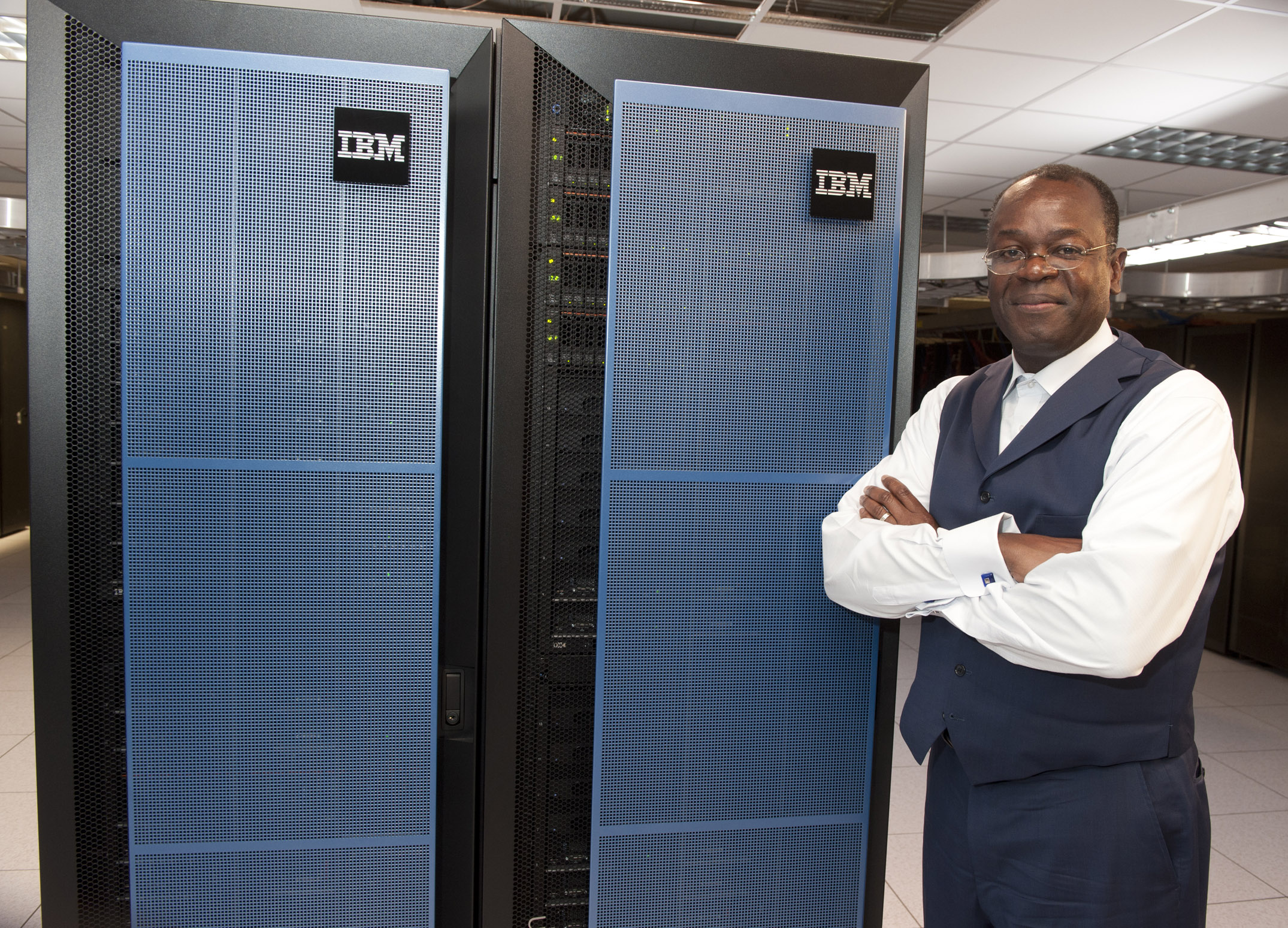 In this photo taken by Feature Photo Service for IBM: Rodney Adkins, senior vice president in charge of IBM's Systems and Technology Group, stands beside one of IBM's new PureSystems at a company lab in Research Triangle Park, NC. PureSystems is the result of a $2 billion development effort at IBM to create a new category of business computing that combines server, storage and networking resources along with an array of built-in software patterns and business processes into one highly automated and simple-to-manage machine. (Jon Simon/Feature Photo Service for IBM)
In this photo taken by Feature Photo Service for IBM: Rodney Adkins, senior vice president in charge of IBM's Systems and Technology Group, stands beside one of IBM's new PureSystems at a company lab in Research Triangle Park, NC. PureSystems is the result of a $2 billion development effort at IBM to create a new category of business computing that combines server, storage and networking resources along with an array of built-in software patterns and business processes into one highly automated and simple-to-manage machine. (Jon Simon/Feature Photo Service for IBM)The conference room went dark at Chattanooga-based InfoSystems.
A handful of local tech executives waited quietly as the clock ticked closer to IBM's big reveal.
In mainstream technology news, consumers focused on Apple's price-fixing snafu and Facebook's Instagram purchase.
But IT geeks around the world instead were tuned into IBM's streaming announcement of a new server design, which the company says will change corporate computing in a big way.
"With traditional computing, you have to put the servers and storage together yourself and make it work," said Clay Hales, president and CEO of InfoSystems, which sells and installs IBM equipment. "This is more like an appliance."
IBM spent $2 billion researching the best way to change the world's data centers for the better, and settled for the simplified approach.
InfoSystems on Wednesday became one of more than 600 companies around the world that announced its support for the technology.
"We're part of the first wave," Hales said.
Indeed, the days of server assembly may be fading away in favor of the toaster model, where customers buy the product they need straight from the factory and just plug it in.
If network administrators buy the hype, they could save on the estimated 70 percent of corporate technology budgets that companies spend tinkering with server racks, IBM says.
IBM's PureSystems computers start at $100,000, which Hales said is about 10 percent less than the cost of ordering and assembling all the server parts separately. Top-line models cost more, starting at $300,000 for enterprise models.
"If you took all that stuff and bundled it together yourself, it'd actually be a little bit more," he said.
The real savings, however, is in the labor.
Instead of weeks of trial and error, an employee need only plug in a handful of cords, flips a switch and they're in the cloud within a couple of hours, IBM says.
Rod Adkins, senior vice president for the IBM Systems and Technology Group, said the idea will "fundamentally change the economics of IT."
Codenamed "Clean Slate" during production, the idea is to reduce the expense of keeping skilled workers tied up in the server room for weeks on end, and instead send those employees out to sell products to customers.
Like ordering a new microwave, network administrators simply choose the features they want and wait for their system to show up. Administrators can run the built-in software, which IBM says automates the majority of typical tasks, from an iPad.
"A lot of competitors say they're offering integrated systems," said Jim Stallings, general manager of global markets for IBM. "They're really not."
